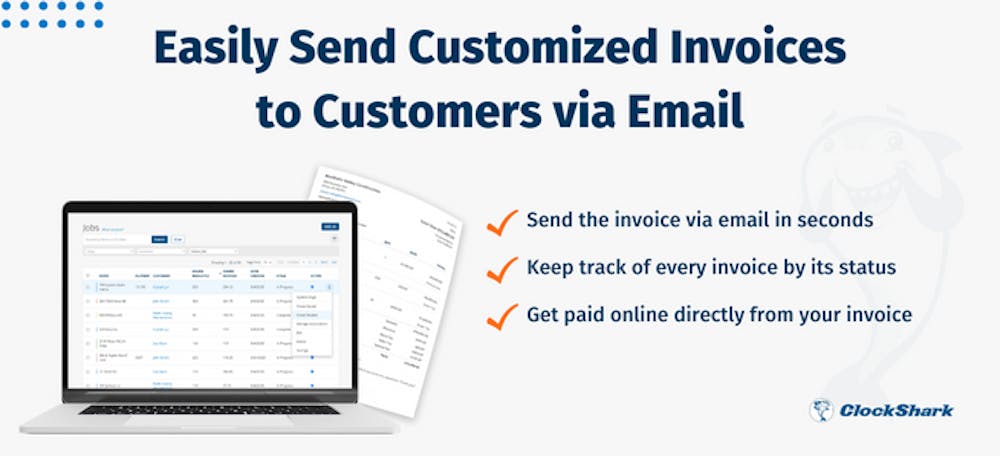If you’re in the business of residential or commercial real estate construction - or are looking to move into this area - you’ll need to have a clear understanding of construction draw schedules.
There are many benefits to having a draw schedule when doing construction projects. They help you have a clear understanding of how much you’ll be making by the end of each project and, since construction projects are often delayed by unexpected circumstances or situations, cash flow issues can happen. A draw schedule in construction reduces the issues associated with this and reduces the risk of late payments which frequently plague construction professionals.
In this post, we’ll show you exactly what you need to know about construction draw schedules and how to make them work best for you and your business.
What Is A Construction Draw Schedule?
A construction draw schedule is a form of construction business financing. It’s the how and when construction funds are distributed for a project. There are many things taken into consideration when developing a draw schedule, and it’s important to have a clear understanding about them.
When finances are provided by a banking institution or similar type of lender, the draw schedule is a binding agreement between the builder, the lender, and the contractor. Construction draw schedules allow banks to see the progress of the project and release funds as the project progresses.
How Does A Draw Schedule Work?
With a construction project, the draw schedule outlines when funds will be dispersed to the contractor throughout the project, rather than a lump sum payment. Typically, these are established around milestones so when one particular phase of the work is completed, the builder receives a payment. This is called a draw.
Fannie Mae’s loan agreement includes a seven-payment draw schedule like this:
- Closing
- Site Prep and Utility Service
- Framing Utility Hookup and Enclosing
- Interior
- Exterior Finish
- Interior Finish & Completion
- Final
Each of these milestones includes specific steps that outline what completion of the milestones includes. For example, the Closing phase will include:
- Purchase of Property
- Payoff lien(s) on Property
- Closing Costs
- Interest Reserve
- Monthly Payment Reserve
- Prior Work
However, you can negotiate as many or as few draw payments as you feel you’ll need for your construction project, to ensure you are able to stay on track, on budget, and cover your overhead expenses.
Most draw schedules include a retainage which is a financial incentive for contractors to complete the work as described in the contract. A portion of funding - usually between five and 10 percent - is withheld until the project is completed to the owner’s satisfaction. The retainage amount is withheld from each milestone payment.
For example, if you have a project with six milestones and, after each milestone is completed, you’re due a $12,000 payment, you will receive $10,800 ($12,000 minus the 10% retainage). This money is withheld from each draw, until the end of the project. While it is a good incentive for contractors, it can also be a way for owners to avoid payment so it’s important to have clear and concise records of the work completed in case the owner refuses to pay the retainage after you have completed the work.
Why Should You Have A Draw Schedule?
It is often challenging to manage cash flow in construction but a draw schedule is a common tool used in construction projects. Even if you are borrowing money, it’s important and it’s actually a requirement if your construction project is being financed through a lender.
Reduce Cash Flow Problems
A draw schedule helps you budget better, so you don’t have to worry as much about having the funding to cover materials and supplies. As each phase of the project is completed, a fresh round of funding is issued to cover the next one.
Protect Your Company
While sometimes contractors can get stiffed at the end of a job like this by owners withholding the last payment, most often having a draw schedule protects you and, thus, your company and employees. You will have a clear picture of what your cash flow will look like throughout the process.
Protects the Owner
Whether you’re doing a private or commercial project, the owner will have more confidence because they will be able to clearly see what’s being done rather than paying in advance for work that has not been completed yet.
Developing A Construction Draw Schedule
It takes some time and attention to detail to develop a good construction draw schedule and sometimes the lender will develop it for you. However, that does not mean you have to accept their terms, as draw schedules can be negotiated.
Create The Project Schedule
If you’ve been in construction for awhile, you likely have a good idea of the stages of property development and the milestones that make up a construction project. Review previous projects you’ve done to get an accurate idea of how long each phase took and take time to create a reasonable schedule for the project that you’re confident with.
Schedule Your Values
A Schedule of Values (SOV) includes each work item for your project, its value, and the percentage of completion. For large projects, there may be more items to list, but a simple and basic SOV should include at minimum:
- Project name/number
- Name of the contractor
- Application number/date
- Work item numbers and descriptions
- Value of each item
- Percentage of work completed
- Value of work completed (past and current periods)
- Balance remaining for each
- Retainage percentage and amount for each item
- Consent and acknowledgment
The value of each item needs to be as accurate and reasonable as possible so review past job costs to ensure you’re not going to short yourself or your client with incorrect values.
Sample Schedule of Values for a 2000 sq. ft. Custom Home
Cost | % of total | |
Plans and specs | $2,000 | 1 |
Permits, fees, inspections | 4,000 | 2 |
Impact fee | 3,000 | 1.5 |
Clear lot, rough grade | 1,500 | 1 |
Survey | 1,000 | 0.5 |
Water hookup and fees | 3000 | 1.5 |
Sewer hookup and fees | 3000 | 1.5 |
Well, pump, hookup, and water treatment | NA | |
Septic system and hookup | NA | |
Excavation and backfill | 4,000 | 2 |
Foundation and flatwork | 12,000 | 6 |
Rough Framing | 31,000 | 15 |
Windows | 6,000 | 3 |
Exterior doors and hardware | 2,000 | 1 |
Roofing | 5,000 | 2.5 |
Siding and ext. trim | 10,000 | 5 |
Gutters and downspouts | 1,000 | 0.5 |
Plumbing rough-in | 9,000 | 4.5 |
Electrical rough-in | 8,000 | 4 |
HVAC | 8,000 | 4 |
Insulation | 3,000 | 1.5 |
Drywall | 10,000 | 5 |
Stairs | 3,000 | 1.5 |
Interior trim | 7,000 | 3.5 |
Interior doors | 2,000 | 1 |
Painting interior/exterior | 7,000 | 3.5 |
Cabinets and countertops | 12,000 | 6 |
Appliances | NA | |
Lighting Fixtures | 2,000 | 1 |
Plumbing Fixtures | 4,000 | 2 |
Floor coverings: wood, tile, carpet, vinyl | 12,000 | 6 |
Garage doors and opener | 2,000 | 1 |
Porch, wood deck, or patio | 5,500 | 3 |
Driveway and walkways | 6,000 | 3 |
Landscaping | 6,000 | 3 |
Other | 5,000 | 2.5 |
TOTAL CONSTRUCTION COST | $200,000 | |
| ||
Font: Building Advisor
Simplify Your Draw Schedule
In many cases, the owner of the project or the lender will send inspectors out to review the project so you won’t need a lot of minute details on your draw schedule.
Keep tedious things off of it and include only the milestones you’ll be requesting payments for. For example, the Exterior Finish stage may include:
- Sidewalks
- Landscaping
- Wood trim
- Caulking
- Driveways
However, there’s no need to include all of these items on your draw schedule. Simply have “Exterior Finish” as one item.
Calculate The Number Of Draw Requests
Once you have your project divided into clear milestones, take time to think about when and how often you’re going to need funding. This will be dependent on many factors. When do your workers need to get paid? How much of your own money are you spending? Think about retainage. Be as accurate as possible to avoid cash flow disruptions and project delays.
What Is a Typical Construction Draw Schedule?
Draw schedules will vary depending on the project but an example of a typical construction draw schedule looks like this:
- 20% payment received after the completion of site prep and utility services are completed.
- 20% is paid after initial framing and utility connections are completed.
- 20% is dispersed once you complete the interior work.
- 20% is paid when you finish exterior work.
- Finally, 20% is received when the project is completed, including cleanup.
While this is a simplified example, it’s just to illustrate how a draw schedule generally works.
Issues to avoid
If you’re not familiar with draw schedules in construction, there are certain things to watch for because the verbiage in a construction draw schedule can be such that it favors one party over the other.
Avoid Vague Language
Vague wording can lead to misunderstandings so make sure the words you use are clear and concise.
Avoid Front End Load Draws
Front-End load draws may seem attractive but ultimately don’t serve the project well. A front-end load draw is when a significant amount of the money for the project (as much as 70%) is distributed before the project is done. This is not fair to the owner and it puts you at risk of going over budget.
Stick To The Schedule
To protect yourself and the buyer, stick to the schedule as outlined by the draw schedule. This will protect your reputation as a builder, and show good faith to the owner.
Save Time and Money with ClockShark
Length Of Construction Draw Schedules
The length of a construction draw schedule will depend on the size and scope of the project, but most draw schedules are set up for one year. Many projects don’t take that long, though, which is why draw schedules are based on percentages of completion rather than dates.
Construction projects are notoriously known for delays due to issues beyond the contractor’s control, such as weather conditions or disruptions in their supply chain. That’s another reason why draw schedules in construction are popular in commercial construction projects.
Since draw schedules are built around milestones, it will depend on how long it will take you to complete the work as well as how long it takes you to get started on it.
For example, let’s say you’re hired to do a project during the rainy season which prevents the work from getting off the ground for three months. You might only be able to draw a small percentage of the funds to begin with.
Alternatively, if you have a project that will take two months to finish and it’s done in the right amount of time, you can request half the funds the first month and the last half, the second month.
Getting Your Construction Draw Schedules Right
When working in construction, it’s important to have as much data as you can have, to make sure you develop a construction draw schedule that covers your expenses in a way that’s sustainable. Take time to review previous job costs and determine a realistic view of how long the project will take and cost, so you don’t spend money out of your own pocket to cover costs.









